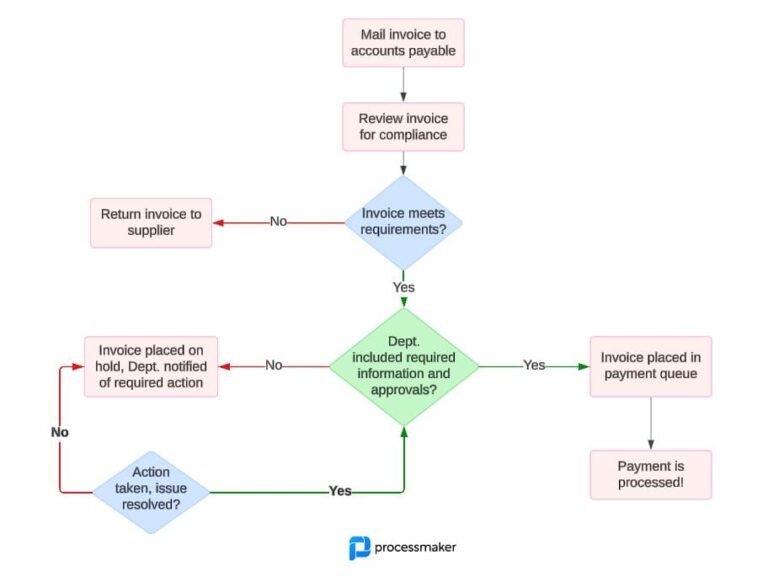The most successful organizations routinely look at what their competitors are doing and ask themselves how they can do it better. All things being equal, gaining a leg up on the competition requires that your organization produce outputs more efficiently and cost-effectively than your competitors. Organizational efficiency and profitability are largely achieved through workflow optimization.
What is workflow optimization?
The definition of workflow optimization is the process of improving existing workflows through a combination of reducing costs, improving efficiency, and workflow automation. The process usually begins by conducting a workflow analysis. Many organizations that fail to improve their workflows make the mistake of applying automation to broken processes. While automation may be an important aspect of your workflow optimization strategy, it is not a cure-all and should only be implemented after careful planning.
Those organizations that experience success with workflow optimization generally adhere to a core set of best practices. By following these practices, you will greatly boost organizational efficiency and gain a significant advantage over your competitors.
Workflow optimization best practices
Governance and Compliance
A lot of organizations ignore corporate governance and compliance altogether. There are several reasons for this. Some find the process boring and would rather jump into the work of implementing new and exciting digital technologies. Others simply prioritize governance and compliance incorrectly. The thinking there is that the process of workflow optimization itself will make compliance easier. For instance, by implementing visible audit trails.
Yet, failing to consider these issues upfront can sabotage your organization’s workflow optimization efforts. You must be fully aware of all processes at the outset and be sure that your compliance and governance approach lines up with your workflows. This ensures organizational consistency and reduces risk.
Create Visual Workflows
Humans are visual creatures. Developing visual workflows, or process maps, go a long way towards laying out and understanding even the most complex processes. They do not have to be visual masterpieces or be overly complicated.
One thing you should try to avoid when creating your process maps, however, is the use of linear diagrams. Workflows are generally non-linear in nature. Where breakdowns occur, it is often necessary to go back to an earlier step to make changes. This part of the process also helps you to identify potential issues in your workflow at the outset.
Successful organizations anticipate what and where things could go wrong. At each of those points, they make adjustments and/or have plans for failures. Have contingency plans in place to avoid problems like productivity delays and system crashes.
Work Backwards from End Goal
Creating a workflow is much like setting any organizational goal. Envision where you want to be and decide what steps you will take to get you there. Identify each step and team member essential to the process. Keep in mind that not all steps in a workflow are created equal. Priority is rarely assigned in sequential order. Rather, priority should be given to the most important steps.
There are good reasons why the most successful organizations spend time prioritizing. Most importantly, knowing organizational priorities allows management to quickly focus on and fix any issues. Where leaders understand how delays and setbacks at each step impact the overall workflow, they can prioritize and minimize the potential impact.
Define Roles and People
Define the roles that each member will play at each step. Successful organizations clearly communicate the full scope of each member’s role in the overall success of the workflow. Moreover, training is provided, not only to ensure that individuals do their jobs correctly, but that they respond appropriately to any breakdowns.
And individuals can only respond as they are trained to if they have the appropriate resources at their disposal. For instance, do team members receive alerts and do they have the ability to quickly communicate with other stakeholders if necessary? When things do go wrong, take the time afterwards to listen to feedback from those involved. They know their jobs better than anyone and can be instrumental to the long-term efficiency of the workflow.
Automate the Workflow
The infrastructure put in place around a workflow is called a workflow management system. At the outset we mentioned that automation is no cure for defective workflows. Once you have spent the time moving through the planning phases described above, however, you can identify areas where automation can make your workflows more efficient.
Knowing where to focus your automation efforts is half of the battle. If your organization has no prior experience with digitization, start small with the most basic and repetitive of tasks. These are tasks that do not involve human-level decision-making. If you are still not sure where to begin, consider working with a partner that offers a simple to use end-to-end workflow automation platform.
The reasons why successful organizations automate workflows is not just to save time and money. While saving time and money through efficiency are certainly huge benefits, the automation of essential aspects of your workflows make it less likely that you will experience costly delays and breakdowns.
Re-evaluate
Improvements can only be made if deficiencies are identified. A good rule of thumb is to evaluate your workflows monthly or quarterly. When conducting your evaluations, look for:
- Whether you have achieved your goals or are headed in the right direction
- Whether there have been significant organizational changes like the addition or subtraction of team members, or changes in processes that impact the overall design of your workflow
- Any setbacks or breakdowns that occurred in the applicable review period
Make changes as needed. Successful organizations continually evaluate and improve their workflows to increase efficiency and profitability.
Following the best practices above can go a long way towards ensuring the success of your organization’s workflow optimization efforts. You will emerge from the process with a better understanding of your organization. Most importantly, workflow optimization will make your organization more agile, efficient, resilient, and competitive.





